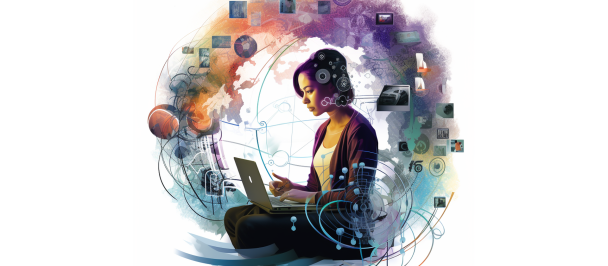Depopulation in Serbia is a complex challenge with multiple root causes, linked to multiple societal problems. To solve it, we need to approach it in an integrated way. At UNDP Accelerator Lab Serbia, we use new sources of data to understand this challenge more quickly and come up with new solutions.
We recently experimented with LinkedIn and Google search data to better understand Serbian labour out-migration and to map the diaspora. We found out that near real-time data can give us new insights into this complex challenge that wouldn’t be possible using the traditional data sources and helps us rapidly understand the dynamics of what is happening.
If framed properly, data analytics (discovery, interpretation and communication of meaningful patterns in data) can generate important insights to support truly transformational change. Strengthening data quality, usage, and availability and applying existing data to create better quality development work are at the centre of UNDP Digital Strategy.
How can Data help
This data-driven approach improves our ability to understand issues and to respond to them in a more timely and effective way. We are ready to respond to new insights or ideas, even if they challenge conventional wisdom, come from unusual suspects or novel (non-official) data sources. Data visualizations help us to understand large amounts of complex data. Because of the way the human brain processes information using charts or graphs is a quick, easy way to convey concepts in a universal manner. We are collaborating with data visualization experts who help us learn the dos and don'ts of data visualisation techniques.
Getting credible Data
The complexity of the driving forces behind population dynamics makes credible data very challenging to come by. Despite the importance of international migration, estimates of between-country migration flows are still imprecise, further encumbered by frequently weak capacity to collect, analyse and interpret data; rural-urban in-country migration is similarly challenging to keep up with. On the other side, data on birth and fertility rates are tracked by national statistics, but a more in-depth analysis of family dynamics would require access to data scattered across public agencies and typically not available in machine-readable formats.
Big data and alternative data sources have been explored as proxies for international and internal migration flows. Machine intelligence can enhance our human intelligence. Machine learning can help us analyse large volumes of data and make better predictions or more quickly understand lots of unstructured information. The evidence of new insights is promising.
Some examples include:
- Big data sources where the primary usage is for geolocation, such as Facebook tags, Twitter, Instagram, Foursquare and mobile data GPS.
- Big data sources where the location component is not part of its primary usage, or ‘data exhaust’: digital transactions such as financial services, communications services (such as anonymized records of mobile phone usage patterns) or information services (such as anonymized records of search queries).
- Combining various datasets and using various machine learning algorithms to identify patterns (i.e. combining satellite data, sensor data, drone data with census data, mobile networks data, citizen-generated data to find the precise geographic distribution of the population)
Depopulation Data Challenge
We at the Accelerator Lab strongly believe in tools, tactics and methods that harness the power of people, data and technology to solve complex problems. Faced with the complexity of depopulation, we are launching a Data Challenge that will help us to better understand it and re-frame it.
We want to spur novel suggestions how to address this issue by drastically widening the pool of possible solutions. We are inviting interdisciplinary teams (the data science community, academic researchers and everyone interested in the topic of depopulation) to use data and create new datasets, analyses and visualizations on the topic of depopulation.
Teams will come up with a detailed concept, and the best will receive financial support to implement their solutions. We will provide teams with instructions or access to various existing datasets, and it is up to them to capture, enrich, analyses and visualize that data, and to come up with new insights. We are hoping that the teams will provide relevant and timely data-driven insights on the depopulation development challenge, and by extension, help the Accelerator Lab inform better development policies and programs.
What Next
In order to speed up the data revolution, it's important to connect those organisations and companies in possession of valuable datasets that are useful for development with the development agencies, NGOs, data scientists and other interested stakeholders, and make sure the datasets are accessible in the future. Many old datasets can be used to train new machine learning algorithms to build new products and provide new knowledge from big data, ultimately helping more people.
Looking more broadly at the development challenges and achieving Sustainable Development Goals, it is still very hard to bring together the most useful data and access reliable evidence about what works, where, why and how. We are working hard through UNDP Accelerator Labs to move to a longer-term vision where there is an open and reliable access to data and knowledge, engaging major international organisations, NGOs, corporates and national governments.

 Locations
Locations






